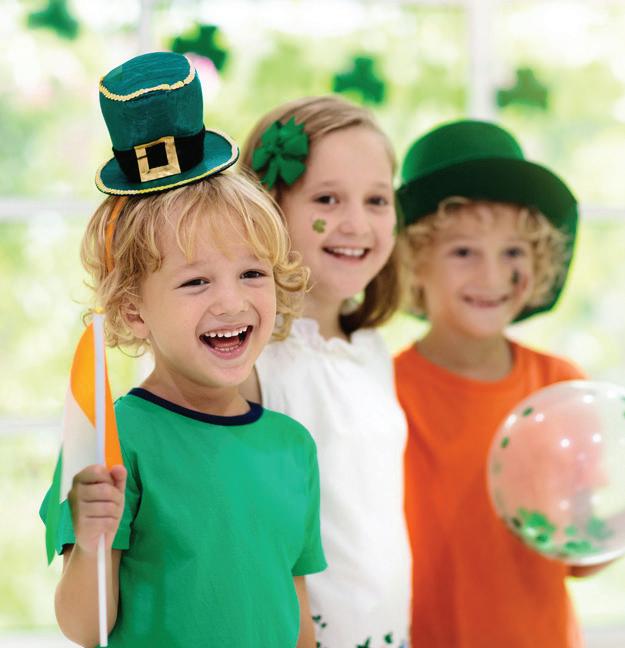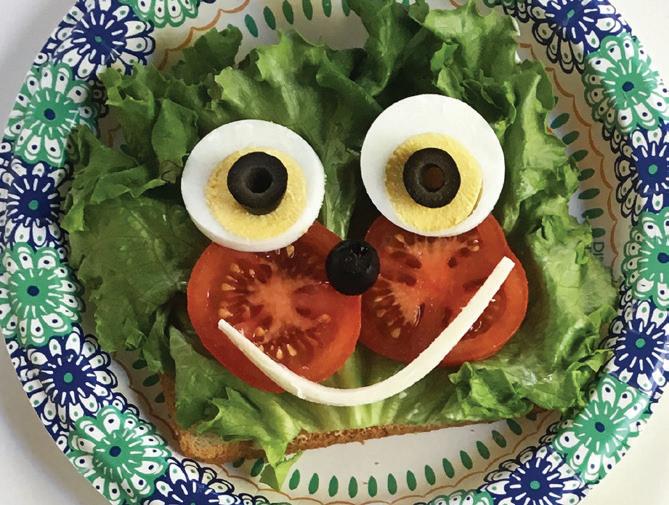
13 minute read
Spring Has Sprung
SPRING HAS SPRUNG It’s Time for a Celebration
By Pam Molnar
Advertisement
Ahh, spring! That wonderful time of year between the spring equinox and the summer solstice when everything is warmer, colorful, and new again. With winter now behind us, it’s time to celebrate. Check out our 12 fun ideas to welcome spring and get this party started.
GAMES:
1. Frog Flop: You will need two green beanbags for each team and one beanbag of any other color for the game. You can sew on eyes or decorate with a marker to make them look like frogs and to differentiate for each team. The first team tosses out the colored beanbag. The object of the game is to get your team’s green beanbags as close to the colored beanbag as possible. One point is given for the closest frog. Game continues to 15 points.
2. Make-Your-Own Spring Bingo: This is both an activity and a game. Players are given blank bingo cards (check Etsy or make your own) and spring stickers. Players can place the stickers in any square on the bingo sheet. When they are done, play the game as normal, calling out the objects found on the stickers.
3. Spring Headbands: Write spring words, such as “butterfly,” “tulip,” and “umbrella,” on separate index cards. Pass out an elastic headband to each player and have them sit in a circle. Players are given a card, but they may not look at it. Instead, they wear it on their forehead, held in place with the headband, with the word facing out. Players ask and answer yes and no questions to guess what word is on their card.
4. Pick from the Garden: Place suckers (dum dum pops) in a terra cotta pot filled with shredded green paper over a floral brick. The sucker sticks are marked with different color ink. The game can be played as a match game (with a prize given) or as a task game. For a task game, each color sucker stick represents a task category such as singing, drawing, or even spelling.
rate and depth as her peers. As a result, the general education curriculum must be modified to her instructional level in order for her to participate in the general education class.”
Transition Services must be provided if the child will be 16 years old any time during the life of the IEP. There must be a statement of the student’s preferences, needs, interests, and results of any age-appropriate transition assessments. “Christine may attend community college, so she will take high school classes and hopefully get a diploma” is too general and gives no real information. “Bud was interviewed about his future plans using the TPI (Transition Planning Inventory). Results show that Bud needs to learn about employment, how to find a job, the skills required for different jobs, and how to keep a job once hired. Also, Bud did not know that job applications are usually required or that he could not set his own wage. The TPI further indicated that Bud planned to take public transportation to work but did not know how to take the bus or who to ask. Bud’s only stated interest was testing and designing video games, a job he thought was easy to find.” Although wordy, this is an informative transition section.
Be careful of the “does not qualify for this service” trap. Once a student is eligible for special education services under any disability category, all needs must be addressed. A student does not need to independently “qualify” for each type of service—such as occupational or speech language therapy.
Participation in Statewide/Districtwide Assessment: Be sure to ask what assessments will be given to your child during the life of the IEP. Look at each academic area separately, and document all accommodations necessary for the student, even if offered to every student. Know that if a student will later need extra time on a national test, like the ACT or SAT, the student must have a history of having that accommodation for testing. The IEP provides that documentation and history over the long term.
Measurable Annual Goals and Short-Term Objectives: Annual Goals (AGs) are just that—what is hoped to be achieved in a year’s time, with measurable criteria, in each specific area. Each goal should correspond to a need identified in the Present Levels. Each goal should also have baseline data in the Present Levels. Why is this important? Districts are required to regularly report a student’s progress to parents on IEP goals and objectives. It is virtually impossible to report whether a student is making progress if you do not know where the student’s skill was in a particular area before the special education services started. Not all IEPs have Short-Term Objectives. However, if an IEP does have Short-Term Objectives for any of the Annual Goals, they must be linked together. The Short-Term Objectives are the building blocks to reaching the target Annual Goal. Every goal or objective requires two data points somewhere in the IEP. Baseline data is the starting data point for any goal or objective, usually in the Present Levels. The criteria for meeting a Measurable Annual Goal is the second data point.
Goals and objectives must be defined and measurable. State exactly how and when each will be measured. Anecdotal information is generally not enough, and it is important to see the word “data” somewhere in the measurement process. State who will do what, under what conditions, and to what degree, including the level of support that will be provided to the student when the goal is measured. “Elizabeth will improve her reading comprehension skills from a 5.3 grade level to a 6.5 grade level” provides baseline data about where the student is starting and the goal to try to reach.
Watch out for “roll-over” goals. These are goals that don’t change from one year to the next. If the child has not made progress and the same goal is still needed, something is wrong and there must be a change. If the same goal is still needed, then the student needs different instruction, more instruction, a different instructor, or something else. Leaving the same goals, with the same instruction, makes no sense.
Make sure that the goal states how progress is reported to the parents. These are generally “check boxes” on the IEP, but they must state how the parents will be informed of progress (e.g., in writing), how often (e.g., monthly), and how the progress will be measured. Make sure that the progress is being measured by data, not just observations or anecdotal information, which are too subjective. Avoid vague and uninformative progress statements such as “Elizabeth is working on this goal, with slow progress.” An informative progress note might read, “Kevin’s reading comprehension has increased this term from a 4.5 to a 4.8 grade level.”
Specially Designed Instruction: SDI is the amount of instruction your child will receive in each area of need. For each AG on the IEP, there must be corresponding SDI on the Service Summary Page. Generally, the amount of SDI is the amount of time each goal or goal area will be worked on. This is an educated guess, but it must be individualized. For each area of SDI, there must be an amount of time the area of need will be worked on (daily, weekly, or monthly), by whom, and where the instruction will take place. A good example would be, “Reading Comprehension, 60 minutes each day, in the resource room, by a special education teacher.” This is explanatory and accurately informs a parent.
Students do not have to “qualify” for each individual service, as parents are sometimes told. There is a difference between the criteria for eligibility for special education services and the right to receive services. Once a child is eligible for special education services, all of the child’s needs at school must be met—no exceptions allowed.
Related Services: A Related Service is something necessary to allow a child to benefit from SDI. Related services frequently found on IEPs are speech-language, occupational therapy, psychological, Continued on page 33
ACTIVITIES:
1. Tic Tac Toe: Gather medium-sized river stones and let the kids paint them to look like ladybugs and bees. While they are drying, you can make a board on the back of a small cinch bag with colored tape or markers. When the stones are dry, they can be stored inside the bag so they are ready to play when you are.
2. Jelly Bean Towers: Pick up jelly beans and toothpicks at the store. Place kids in groups and have them construct a platform. When they are finished, give the kids ballots to vote for the best in several categories. Give prizes for the highest, strongest, and most unique designs.
3. Crystal Rainbows: You will need glass jars, multicolor pipe cleaners, Borax, hot water, and dowel rods. Wrap the top part of several pipe cleaners around a dowel rod that will lay flat across the opening of the jar. Mix 3 tablespoons of Borax in a cup of boiling water. Pour mixture into jars and insert pipe cleaners into jar. Crystals will start forming overnight. Remove when covered in crystals and let dry.
4. Canvas Painting Class: This is a spinoff of the Paint and Wine events for adults. Give all the kids a canvas, a brush, and paint needed for the project. Have someone lead the group by showing everyone a step-by-step process to create a spring painting. Not sure how to do it? Check out YouTube for suggestions and a step-by-step guide.
CRAFTS:
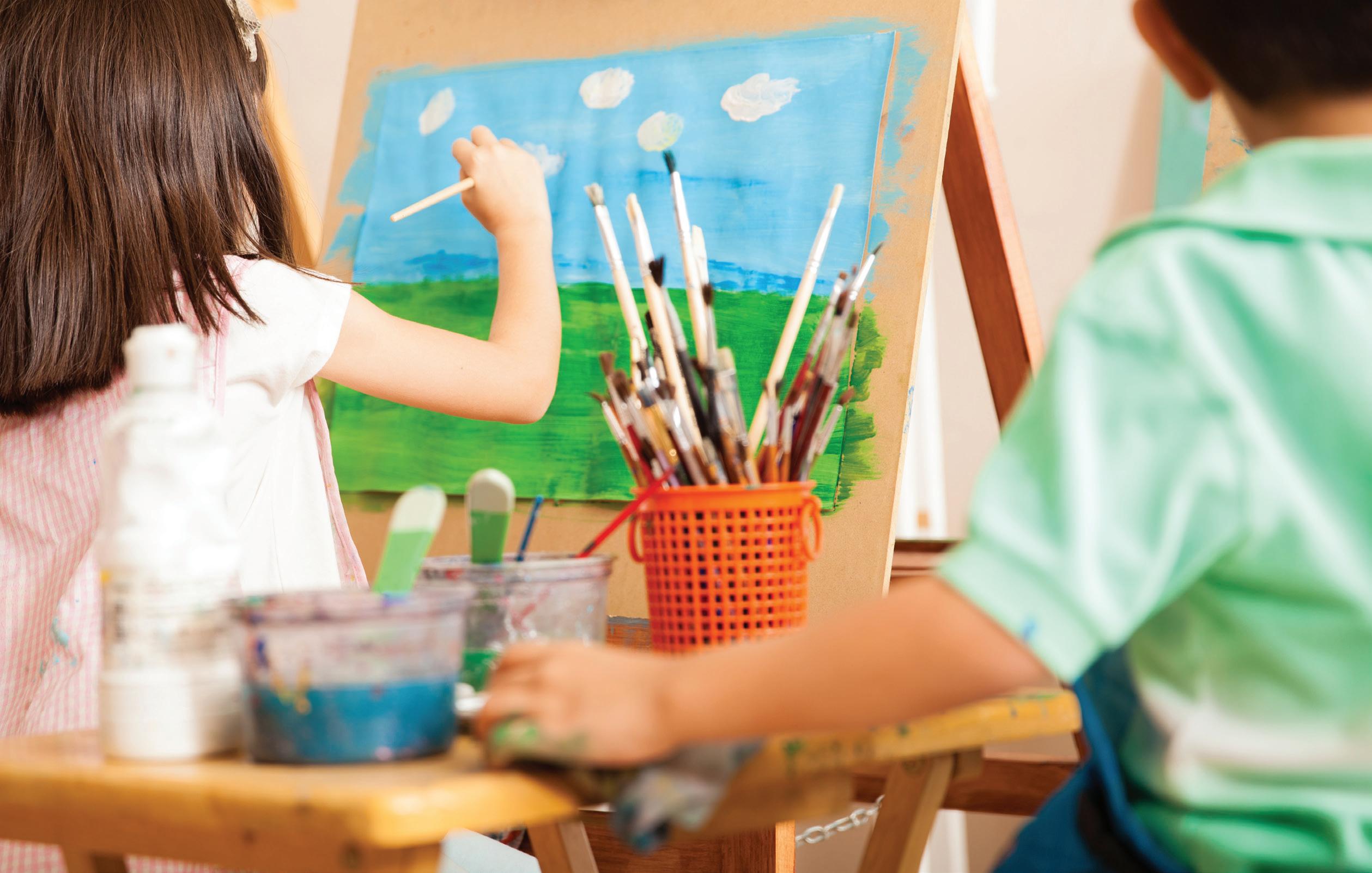
1. It’s for the Birds: Oriental Trading offers unfinished birdhouses and bird feeders on their website. Gather decorating options such as paint, glitter, jewels, ribbons, and whatever other items you think will attract the birds. Let dry and hang from a tree near the window.
2. Make a Kite: A windy spring day is a wonderful time to make a kite. You can use craft store dowel rods or collect small branches that have fallen from trees for the cross bars. For the sail of the kite, try newspaper, wrapping paper, or plastic garbage bags. Using plain craft paper allows for decorating with a personal touch. Attach string to the front of the kite and take it for a ride.
3. Make Fairy Houses or Castles: Collect empty paper towel rolls for the base. Fashion a pointed roof with construction paper, pine cones, or twigs, and decorate the cardboard roll with markers, colored tissue paper, wallpaper samples, or felt. You can also cut out a door or windows. Create a village by securing to a poster board and add roads, greenery, and a small brook made from foil or watercolor paint.
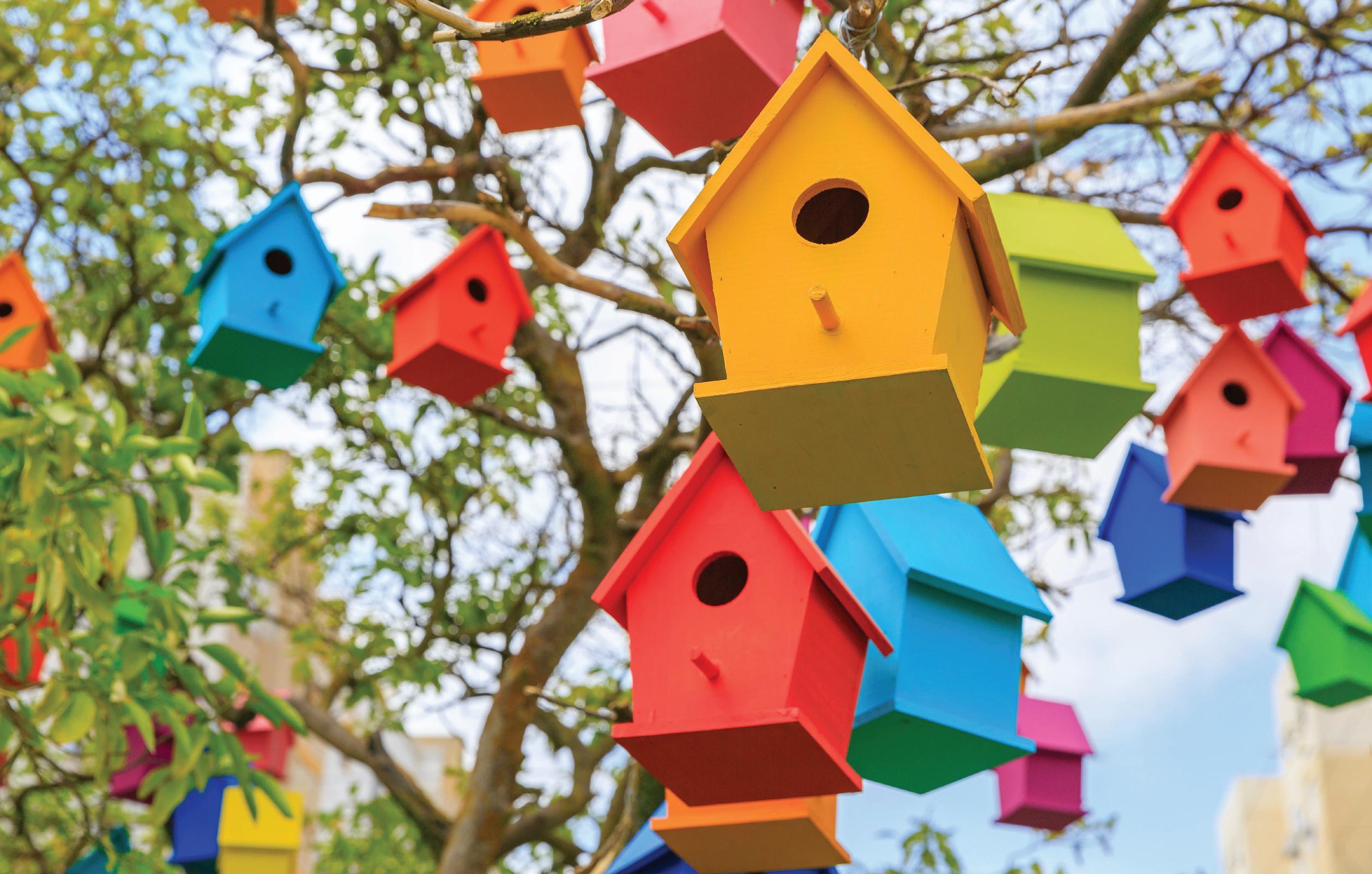
4. “Welcome Spring” Door Hanging: For this craft, your only limit is your imagination. Use a base such as wood, felt, a straw hat, a wreath, or even an old umbrella. Add craft moss, ribbons, artificial flowers, yarn, paint, burlap, etc. Personalize it with a saying, monogram, or your favorite spring animal. v
Pam Molnar is a freelance writer and mother of three. She loves to plan parties and watch the joy it brings to her guests. Follow her on Etsy at Pam’s Party Printables.
BEFORE




AFTER
VISIT US ONLINE CO-MATNWF.COM
Construction Materials of Northwest Florida offers many types of gravel, sand, dirt, base materials and many other products. Check out our products page to view all of our offered products and services.






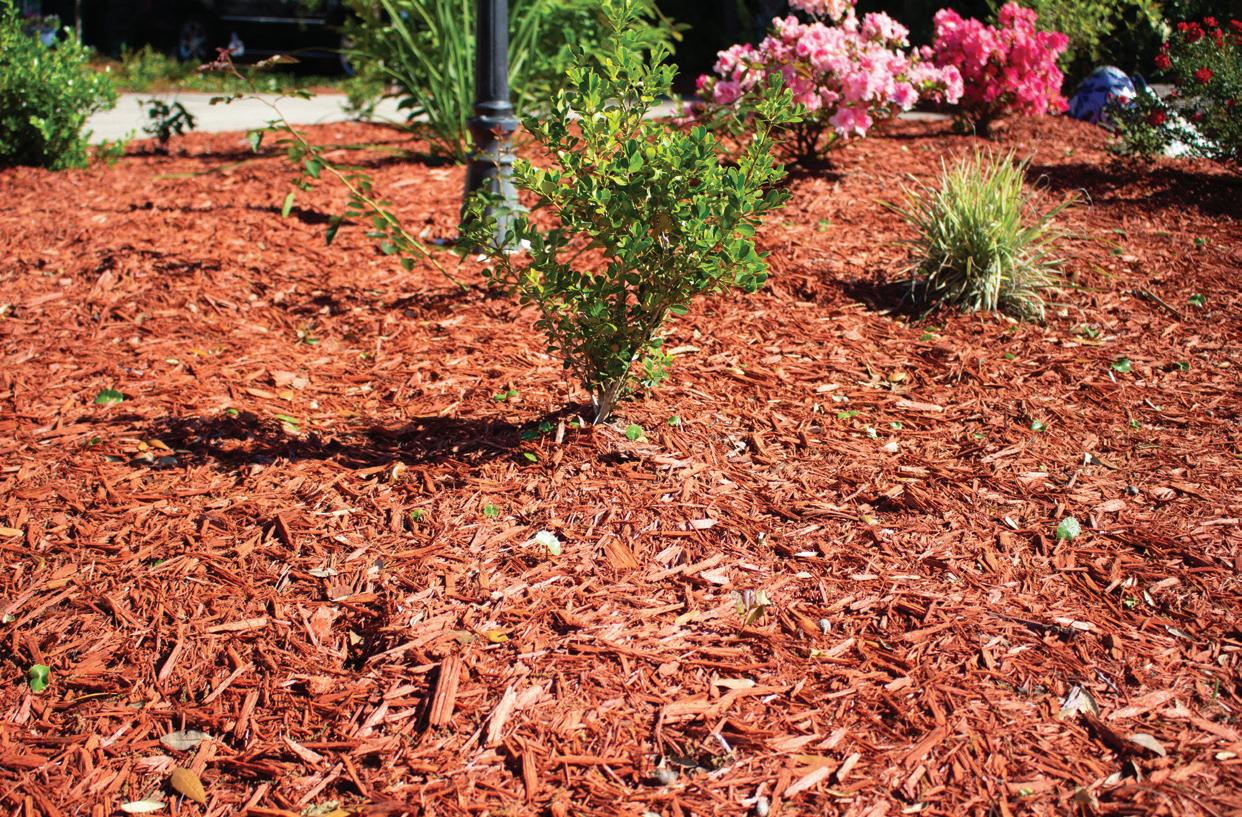
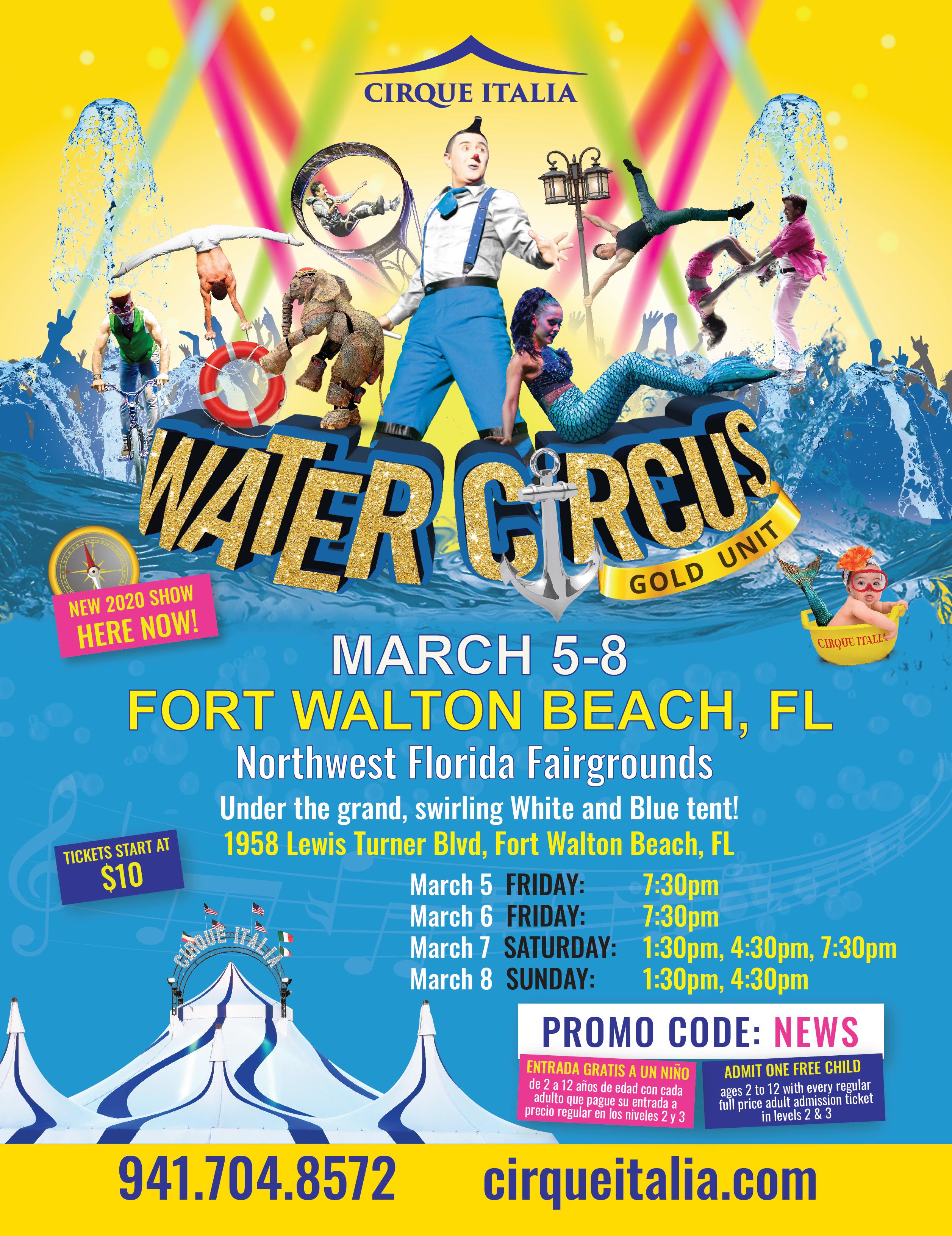
transportation, and physical therapy. If the related service is intended to increase a child’s skills, then there must be a corresponding Annual Goal.
Transportation is a related service and should always be listed if it will be provided by the district. Whether “transportation” needs an Annual Goal depends on the purpose of providing transportation. If the related service is simply to transport the child to school, no Annual Goal is required. However, if transportation is being used as a method to entice a child to attend school and thus increase attendance, an Annual Goal would be required.
Accommodations and Modifications: This is probably the most misunderstood area of IEPs. Accommodations change the presentation, setting, timing of, and/or response to curriculum and/or instruction. They are designed to provide the student access to curriculum and instruction. Accommodations do not alter the assignment content level or evaluation of the student, and the student must still demonstrate mastery of core content.
Modifications change the level and/or content of the curriculum and generally result in modified grades. Modified grades sometimes result in a modified diploma, but this varies from state to state. Again, modification must be individualized to each child. Is it an accommodation or a modification? Assume the math class is studying double-digit multiplication. The homework assigned is 50 double-digit multiplication problems. For Lidia, who processes information slowly but can do the work, an accommodation might be that Lidia only has to do 20 of the assigned homework problems. She would be demonstrating the same level of mastery with fewer problems. For Christine, who really struggles with math and is still learning basic multiplication, her homework might be to do 50 single-digit math problems. Christine has a modification because she is not doing the same level of work as the other peers in her class. disability-specific training is needed for staff who will work with the child. Decide if child-specific training is needed for staff—particularly educational assistants. Related service providers who provide consultation to special and/or general education staff should also be documented.
Non-participation Justification: State clearly how much time the student will be removed from participating with regular education peers in the regular classroom and other non-academic activities. This should include clear reasoning for the child’s removal. Most important, the amount of time should not be based on the school schedule but on the child’s individual needs.
Extended School Year (ESY) Services: This is the most overlooked and ignored part of the IEP, as these are services that are provided by the district during the summer. A computer program for writing IEPs that automatically checks the ESY box as “no” is a red flag. ESY requires an actual IEP team discussion and should generally be a data-driven decision. If a child is to receive ESY services, the type and amount should also be individualized and listed separately on the IEP.
Placement: Generally, at least two placements must be considered, and any placement the parent(s) proposes must be discussed. Your child is entitled to placement with the most general education curriculum and the most time with general education peers that can be successful, with interventions and supports.
Summary: An IEP is your child’s educational service roadmap, and you are an expert driver. Collect all the information you can, then participate and collaborate on the IEP team to develop the most appropriate plan for your child! v
Supports for School Personnel: This section is often overlooked and rarely discussed, but it is very important. Staff supports needed to implement the IEP are listed here. If the child spends any time in a general education class, consultation between the general and special education teachers is needed. Talk about whether

Author Diane Wiscarson worked her way through the IEP system for her son and, in so doing, found her passion for helping other families navigate special education and the law. Since graduating from law school and founding Wiscarson Law almost 20 years ago, she has helped more than 2,500 Oregon and Washington families obtain appropriate services and placements from the region’s public school districts.






